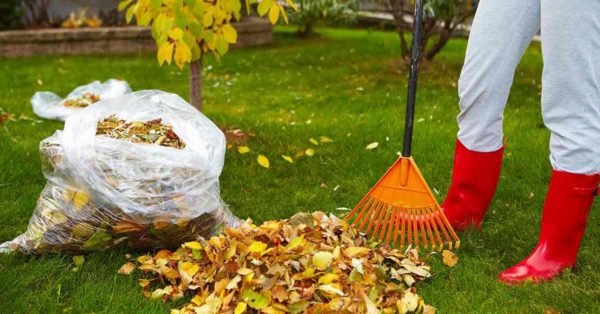On each garden there are many different trees and bushes. And each of them drops leaves in the fall. In addition, after harvesting, there are whole heaps of plant waste. Where to put all this wealth? Some gardeners just send them with garbage, some burn them. Both solutions are erroneous. All of these ingredients can be used to make compost. However, many people find reasons not to start a lawsuit with its preparation. One of the reasons is the lack of space for the construction of a pit or a plot of land for a heap. But it turns out that humus can be prepared in bags.
Before you consider how to make leaf humus in bags, you should understand the general concepts.
Compost is an artificial fertilizer made from tree leaves and plant waste.
Table of contents
Pros and cons of leaf compost
What is the benefit of compost? One question to answer this question is difficult. To understand its importance in agriculture, it is necessary to list its main advantages.
- the preparation of humus relieves the gardener from the problems of exporting garden plant waste, as well as some food waste;
- no cost required. All components are directly under the feet in the garden area;
- it is an environmentally friendly fertilizer that is saturated with micronutrients and humus;
- after introducing it into the soil, it becomes loose and well breathable. In other words, the soil begins to "breathe";
- composted soil retains moisture well;
- can function as mulch. If it is enough, then they can evenly cover a certain part of the garden. Its presence on the beds does not allow weeds to sprout and retains moisture of the plant root system;
- humus lying on the beds attracts birds, and sometimes hedgehogs, which save plants from harmful insects or slugs;
- it multiplies the beneficial bacteria and fungi, which contribute to the decomposition of organic components. Worms are bred in it, which on one side loosen the ground, and on the other - can be used for fishing;
- eliminates the gardener to look for a place to burn;
- a natural product that eliminates the gardener from oversaturation of his plot with all sorts of chemical fertilizers.
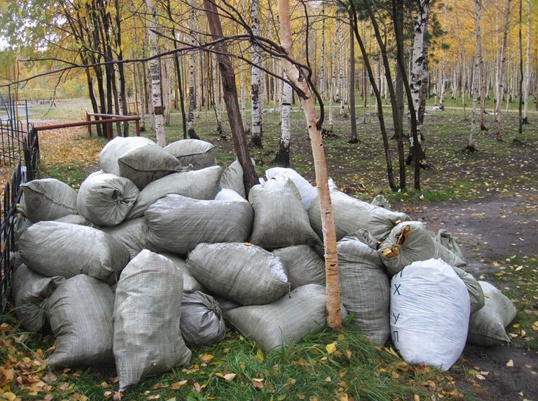
The disadvantages include:
- some leaves having flat forms are endowed with the property of caking with each other into a dense mass, which complicates the process of rotting;
- rapid evaporation of moisture. To ensure the decomposition process, you should often water the compost.
After reviewing the advantages of compost, you can try to understand the technology of its manufacture.
Technology of cooking sheet humus in bags
The main component for the manufacture of fallen leaves are trees. Composting is recommended in the following sequence.
Selection and procurement of components
Components for the preparation can serve as foliage, mowed grass, small branches of trees and other plant waste. The technology of the workpiece is the same for all methods of its construction, including preparation in bags.
Leaves can be collected by hand fan rakes. Such a rake does not damage the stems and roots of plants. Where there are no shrubs and trees, the foliage is better to collect lawn fan rakes. Garden vacuum cleaners are widely used for collection.
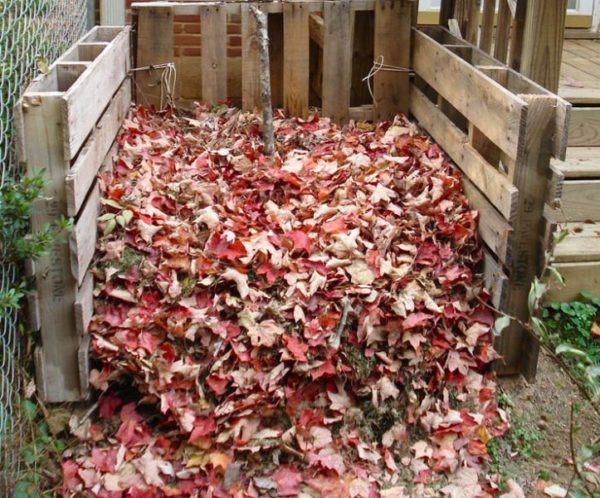
They can operate in suction and blowing mode. When working in the suction mode, the leaves are sucked in with a vacuum cleaner into a special collection that is included in the vacuum cleaner kit. In blowing mode, the leaves can be collected in separate piles. The vacuum cleaner is beneficial because before the leaves are sent to the collection, it crushes it. And finally, if the leaves need to be harvested from large lawns, then it is best to use a lawn mower.
Avid gardeners buy their own lawn mowers or vacuum cleaners. These mechanisms are very beneficial, because they chop products and collect it in special collections consisting of a bag or basket. This gardener is freed from physical labor to transfer to a certain place.
Shredding
Before laying the leaves for compost, they must be crushed. If they are going with a vacuum cleaner or lawn mower, they are already crushed. If the leaves are picked in another way, then for their grinding, you can use a special leaf grinder, called mulcher.
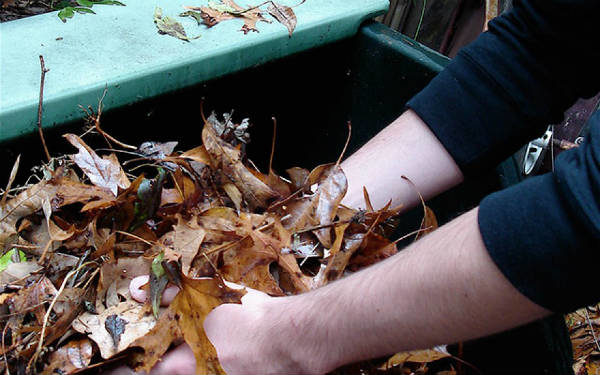
Bookmark material for composting
The collected and chopped foliage is laid in the places where the compost will ripen. This may be a pit, fenced compost heap or stand-alone containers or thick plastic bags.
Collected leaves fit into selected containers and lightly tamped.
Before you start laying the future of humus in the bag, at its bottom should lay a layer from the top of the soil. After that, the bag is filled with other components.
To speed up the process of rotting, there should be enough moisture inside the bag. In addition, moisture should be maintained during the entire period of maturation. Given these circumstances, plastic bags should not be tied, but left open. If the autumn or spring is too dry, it is recommended to moisten the leaves inside the bag with water.
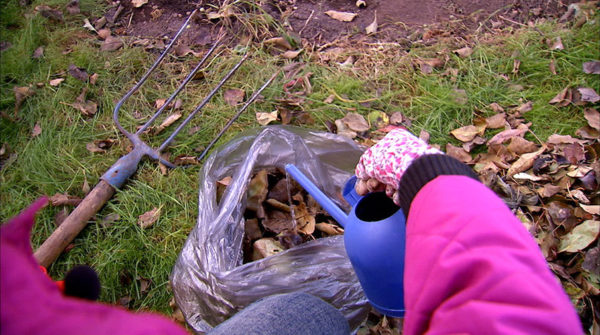
Garden compost bags can be purchased at any gardening shop. They must be black and dense.
In the form of components for the bookmark can not be used:
- animal residues: litter, small bones and other meat waste;
- use fresh-cut and perennial weeds, as well as remnants of the plant root system;
- waste of diseased plants;
- fresh manure;
- waste in which there are toxic substances and toxins.
Nitrogen addition
To accelerate decay, it is recommended to add nitrogen-rich plants to the bag. These plants include lawn grass, nettle, comfrey and others. If after a time in the compost does not appear signs of rotting, then it should be in its composition to add nitrogen biopreparations.
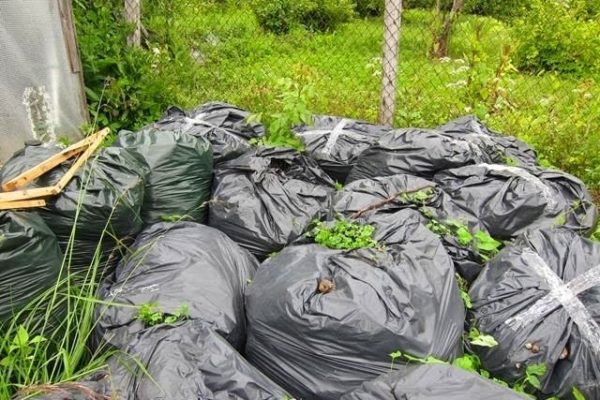
Maturation
The compost prepared in this way is left in open bags for ripening.
To create uniform conditions of rotting, compost, during ripening, it is recommended to mix several times.
Devices for production
Manufacturers have developed many devices for composting. However, their use is beneficial only in large farms.In such organizations, composts are made in large volumes, and the use of small equipment is not rational.
For the preparation of humus in individual suburban areas, but also in cramped conditions, it is sufficient to use the devices that have already been recalled in this article.
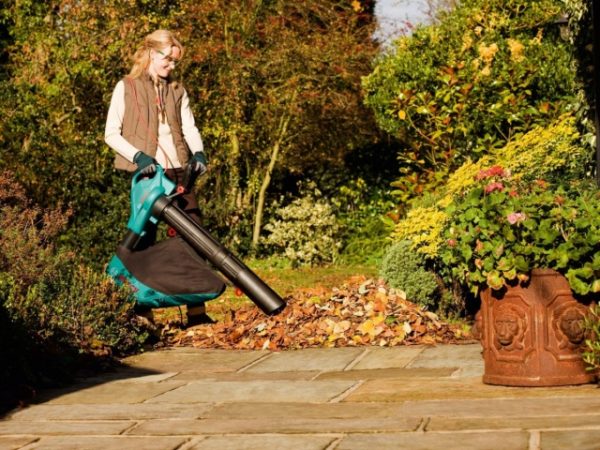
These devices include:
- fan and lawn rakes - they are designed to collect;
- garden vacuum cleaners and lawn mowers - used for collecting and grinding;
- Mulcher - designed for grinding.
Most gardeners know that the soil is depleted over time, which means that you should not expect a good harvest on such lands. Therefore, soil fertility should be increased annually. To improve the soil will take several years.
Thus, compost in bags will save every gardener money and will maintain soil fertility every year.
